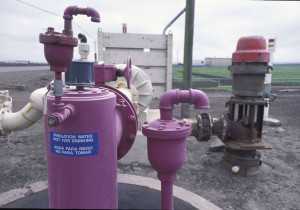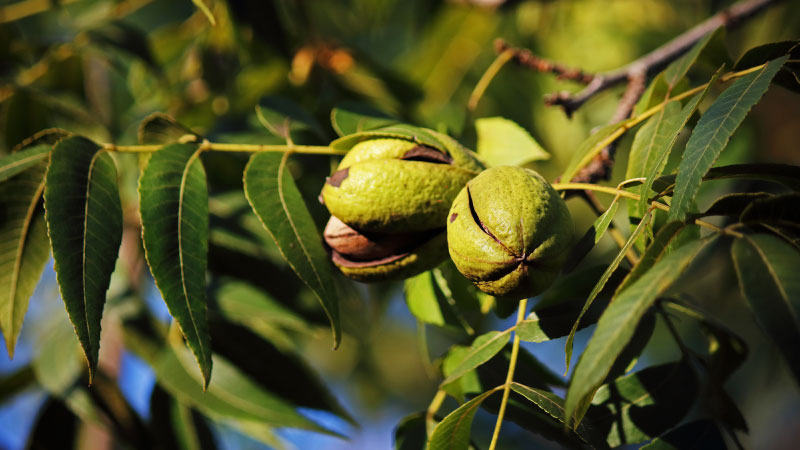Improving Water Management Techniques
With much of the West now in the middle of a severe drought, many of us who work on agricultural water issues are looking ahead to the future and strategizing on how water could be better managed. Average annual precipitation in the Western U.S. may decrease during the upcoming decades. Climate scientists predict less snow pack in the mountains as average winter temperatures rise and summers become hotter.

The Delta-Mendota Canal transports surface water to San Joaquin Valley farms and cities. Photo credit, USDA
Water needed for growing urban populations and for environmental restoration has reduced agriculture’s slice of the water pie. With less water available, agricultural communities will need to become more creative in managing water. This probably means using a mix of surface, ground, recycled, and in some cases, desalinized water. Transferring water between regions will play an increasingly important role for providing flexibility in water management.
Many of the growers in the Central Valley of California who had limited access to surface water this season have relied on groundwater to keep their operations going. Some growers had existing wells to supplement their surface water and other growers had to bore new wells into the water-bearing aquifers below their farms.
Water transfers have become an increasingly important tool for moving water to where it can have the most economic impact in the state. In Imperial County, growers who signed up for a water transfer program with San Diego must irrigate their crops with less water or not farm a portion of their land. The payments they receive for conserving water can offset cost for more efficient irrigation methods, such as drip. Surface water transfers between regions can also be used to bank water in the ground for future dry years.
One lesson of the current drought is that groundwater needs to be better managed in California. As more growers have relied on their wells to bring their crops to maturity, groundwater levels have dropped to historically low depths in many areas. Over-extraction of groundwater can cause land to subside or sea water to intrude into the aquifers near the coast. In either case, over-pumping can irreversibly impair the capacity of aquifers to store water for future use.
Groundwater Management
Although comprehensive water laws and regulations exist for using surface water in all regions of California, similar rules have not been adopted for groundwater. In California, growers have the right to pump groundwater as long as the water is used beneficially to produce their crops.

The Delta-Mendota Canal transports surface water to San Joaquin Valley farms and cities. Photo credit: Michael Cahn.
Different regions in the state can have very different approaches to managing groundwater. Near the coast, where wells are the main supply of water, aquifers are often highly managed. These regions have public agencies with resources to closely monitor groundwater levels and the volume of water pumped, and they may have the authority to curtail water extraction if groundwater levels get too low.
Regions that have traditionally relied on surface water may not have invested in resources to closely monitor groundwater levels and extraction, nor have a regulatory authority that can limit pumping.
On the coast, water managers have learned that managing both ground and surface water together can improve the overall water supply. During wet years when surface water is plentiful in rivers and creeks that drain to the ocean, several water management agencies divert water on to land or into basins to recharge the aquifer. Geological data is used to help locate recharge zones in areas that maximize percolation into underground aquifers.
Individual growers can also maximize recharge to the ground by using practices such as cover crops and soil amendments to capture and infiltrate rainfall rather than allowing it to run-off.
Groundwater can also be banked by switching to recycled water sources. Water recycled from urban sewage has become an increasingly important supply for agriculture.
Presently, more than 16,000 acres of vegetables and berries are irrigated with tertiary-treated recycled water on the Central Coast of California.
Food safety concerns are managed by chlorinating and intensively monitoring the water for potential pathogens before it is delivered by a network of supply pipes to agricultural fields.
Managing Salinity
Because recycled water can be high in salts, efforts have to be made to reduce the salt load of the source water.
Water softeners can be a major contributor of salt. Incentivizing urban users to switch to potassium water softeners can help reduce sodium levels. Most recycled water requires blending with a low-salinity water source to provide growers with a consistent water quality.
Desalinization represents one of the most expensive sources of water for agriculture, usually costing three to four times the price to produce recycled water. However, desalinization may make economic sense under specific conditions. Switching to desalinized water during periods of the year when groundwater levels tend to reach low levels can reduce seawater intrusion into underground aquifers. Also, desalinized water can be used for blending with recycled water to provide a consistent water quality for end-users.
Drought preparation must continue during wet as well as dry years, as wet years are when there is the most potential to recharge ground water supplies.
One positive side effect of droughts is that they invoke a sense of urgency, a key ingredient needed to motivate community members and leaders to take action to improve the management and long-term sustainability of their water resources.










